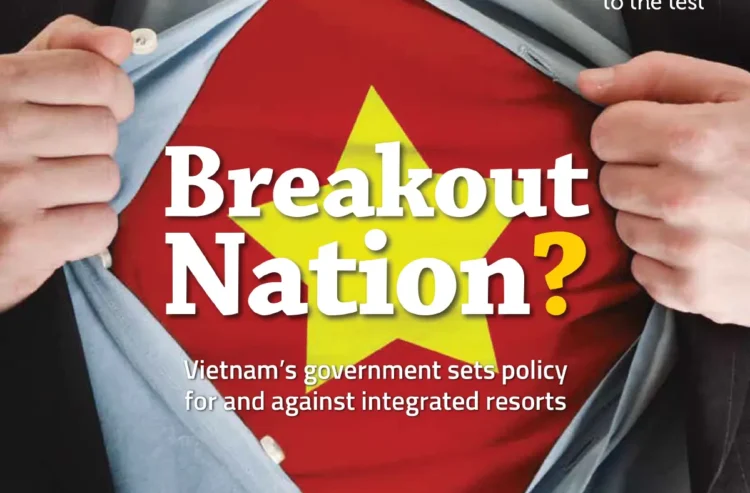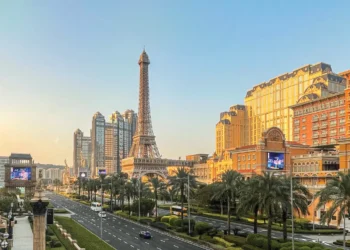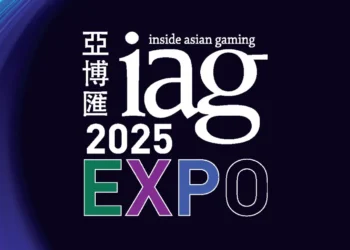In this regular feature in IAG to celebrate 20 years covering the Asian gaming and leisure industry, we look back at our cover story from exactly 10 years ago, “Tricky balance”, to rediscover what was making the news in July 2015!
In the ever-expanding Asian land-based gaming scene, Vietnam stands as a fervent blend of anticipation and aggravation. On the one hand it is home to some of the world’s most alluring integrated resort developments – think Ho Tram and Hoiana – yet these impressive structures remain criminally under-utilized, as the powers that be stick resolutely to their foreigner-only casino mandate. The delicate dance between economic aspiration and social caution continues to stagnate any significant progress, as evidenced by a recently-concluded experiment in locals gaming at Phu Quoc’s Corona Resort & Casino, whose very nature never really gave it a chance of succeeding. One step forward, two steps back.
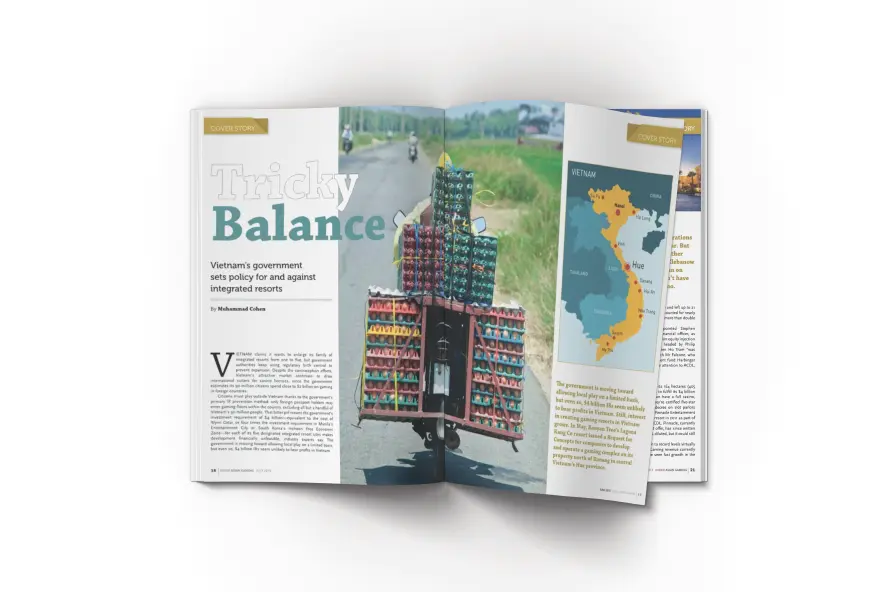 To see just how far Vietnam has, or hasn’t, come in recent times you need only look back in time to IAG’s July 2015 cover story, “Tricky balance”, in which we outlined the constraints and opportunities facing the local integrated resort industry at that time.
To see just how far Vietnam has, or hasn’t, come in recent times you need only look back in time to IAG’s July 2015 cover story, “Tricky balance”, in which we outlined the constraints and opportunities facing the local integrated resort industry at that time.
This was still very much a formative period for Vietnam. Although a handful of large-scale integrated resort projects had already been proposed, only one had been built and opened – The Grand Ho Tram – located on the southeast coast around two hours by car from Ho Chi Minh City’s Tan Son Nhat International Airport.
Ho Tram, as it is commonly known, had endured a rocky road to realization. Originally linked with US casino giant MGM Resorts before its sudden exit shortly before opening in 2013, the resort was instead brought to life by a complex web of international investors, the most prominent being US businessman Philip Falcone and his investment bank Harbinger Capital.
Harbinger’s interest, and that of others, was reportedly sparked by an expectation that Vietnam would eventually allow locals gambling, which explains their long-term US$2 billion commitment to the Ho Tram project.
Phase 1, at a cost of US$600 million, represented an impressive start and was unlike anything else in the country, featuring a 541-room Paul Steelman-designed beachfront tower, world-class links golf course The Bluffs designed by Greg Norman and a casino with 90 tables and 600 EGM positions.
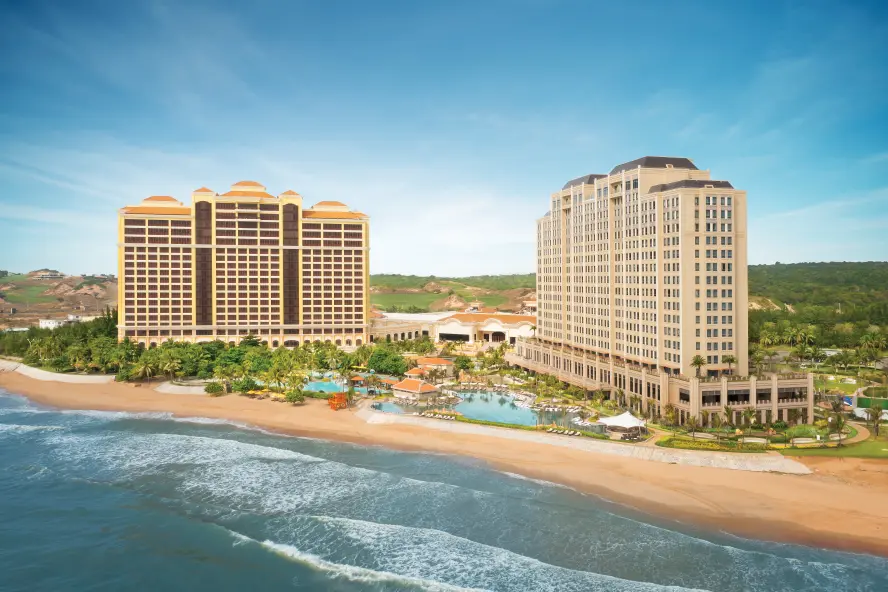
As IAG recognized upon a visit in early 2015, however, the lack of locals was always going to present a challenge. Ho Tram was impressive, industry consultant Andrew Klebanow acknowledged at the time, but was “just missing people”.
The property made some positive progress under the stewardship of Shaun McCamley, who arrived as President in late 2014 and quickly pivoted the focus towards expats and dual passport holders living in and around Ho Chi Minh City.
“This has been an extremely successful marketing move for us,” McCamley told IAG in 2015. “Having large resident expatriate communities on our doorstep has seen us exceed even our own aggressive forecasts for drop and GGR.”
Sweeping management changes in the ensuing years reportedly stalled the property’s progress, although current CEO Walt Power – a former Macau gaming executive – claims to have steadied the ship on the back of an events-driven strategy aimed at filling hotel rooms on weekends.
Recent expansion projects have also helped boost hotel room supply, providing further long-term runway.
There were three other major IR developments being proposed back in 2015, only two of which have been realized (although there have been very recent moves to resurrect the third, in Van Don, Quang Ninh province).
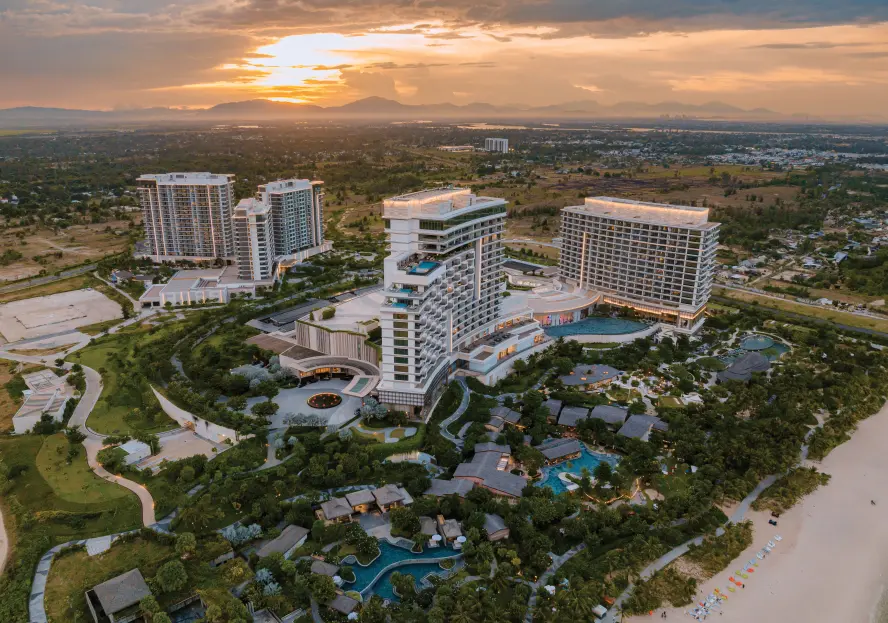
Corona Resort & Casino, developed and operated by a subsidiary of Vingroup Corporation, opened in early 2019 and became renowned as the only casino to take part in the three-year pilot program of locals gaming approved by the Prime Minister. However, the trial was largely curtailed by the arrival of the COVID-19 pandemic shortly after it launched, and while extended beyond its original 2022 finish date, it has been difficult to get a read on how the program ultimately performed given the resort’s remote island location. The pilot program itself is currently on hold, and no locals have been allowed into Corona since 1 January this year.
Further north there had been high hopes for the integrated resort development that is known today as Hoiana. Located just outside of historical Hoi An, Hoiana was when first opened in 2021 a joint venture between Hong Kong jewelry giant Chow Tai Fook, Hong Kong-listed gaming investor Suncity Group and local investment management and real estate giant VinaCapital. This sprawling, high-end resort – situated on a 160-hectare beachfront site boasting multiple hotel brands, exclusive F&B and an 18-hole links-style golf course – was envisioned as playing host to VIP clientele largely sourced from the database of Macau junket operator Suncity. Instead, the arrest of Suncity’s CEO Alvin Chau in late 2021 not only led to the demise of Suncity itself but the collapse of the entire Macau junket industry, prompting a rapid shifting of strategy at Hoiana and ultimately a rejigging of its ownership structure.
With VIP junket play now gone by the wayside, Hoiana has instead marketed itself as a destination getaway with a particular focus on luring customers from Japan, Taiwan and South Korea. It has also followed Ho Tram’s lead as a real estate opportunity for investors by offering up high-end condominiums and other accommodation for purchase.
The reality for Vietnam is that, while it is now home to some of the most impressive casino-resort developments in Asia, they remain largely untapped opportunities as long as government policy lags that of its regional peers.
 In a recent opinion piece, McCamley – who remains a keen observer of the local market long after departing Ho Tram – laments the lack of a proper regulatory body to oversee the industry’s development and a fragmented framework that creates complicated entry barriers for new investors.
In a recent opinion piece, McCamley – who remains a keen observer of the local market long after departing Ho Tram – laments the lack of a proper regulatory body to oversee the industry’s development and a fragmented framework that creates complicated entry barriers for new investors.
“Vietnam’s cautious approach contrasts with neighboring jurisdictions such as Cambodia and the Philippines, where gaming legislation is more liberal and investor-friendly,” he states. “To remain competitive and attract regional tourism, Vietnam may need to modernize its gaming laws and regulatory practices.”
We may also defer to Klebanow, who issued a comment to IAG that rings as true today as it ever did.
“Vietnam has got to get out of its own way,” Klebanow stated back in 2015. “If the government got out of the way, it would be a super regional market [and possibly worth] US$4 billion with local players.”






